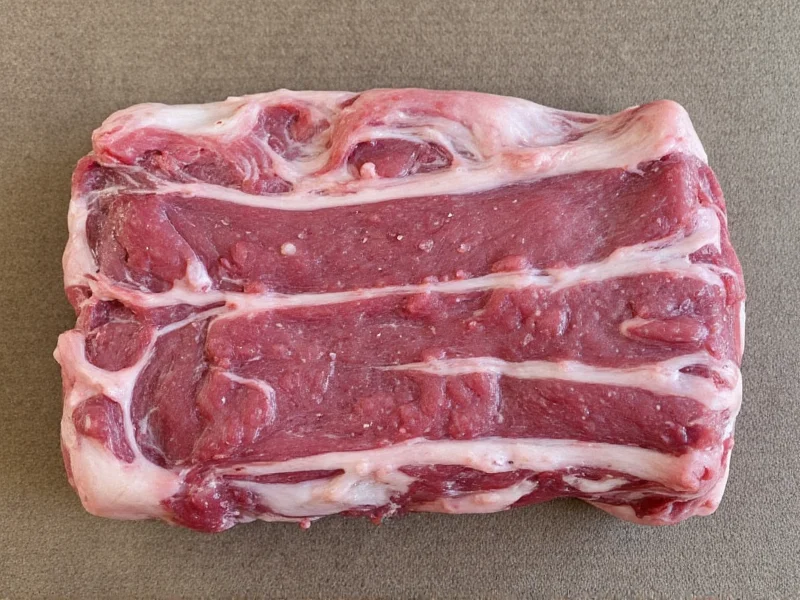Understanding proper rib positioning is essential for achieving tender, flavorful results whether you're smoking, grilling, or oven-roasting. When preparing ribs bone side down on ribs, you're leveraging gravity to enhance the cooking process through natural fat rendering and heat distribution.
The Science Behind Bone Side Down Positioning
Cooking ribs with the bone side facing downward creates several culinary advantages. The curved bone structure naturally forms a protective barrier that shields the meat from intense direct heat. As temperatures rise, intramuscular fat and connective tissues begin to break down, with rendered fat flowing downward through the meat fibers rather than pooling on the surface.
This positioning is particularly beneficial for how to cook ribs bone side down techniques that involve indirect heat sources like smoking or slow roasting. The meat side exposed to upward-facing heat develops a beautiful crust while remaining protected from scorching, resulting in that perfect balance of tender interior and flavorful exterior.
When to Use Bone Side Down Technique
Professional pitmasters recommend why cook ribs bone side down for most low-and-slow cooking methods. This positioning works exceptionally well for:
- Smoking ribs at temperatures between 225-250°F (107-121°C)
- Indirect grilling methods
- Oven roasting with convection settings
- Any cooking method exceeding 2 hours duration
The exception occurs during the final stages of cooking when applying glazes or sauces, where temporarily flipping ribs bone side up can help develop caramelization on the meat surface.
| Cooking Method | Recommended Position | Cooking Time | Temperature |
|---|---|---|---|
| Smoking | Bone side down (entire cook) | 4-6 hours | 225°F (107°C) |
| Indirect Grilling | Bone side down (first 3 hours) | 3-4 hours | 250°F (121°C) |
| Oven Roasting | Bone side down (entire cook) | 2.5-3.5 hours | 275°F (135°C) |
| Reverse Sear | Bone side up (final 30 min) | 3-4 hours total | 225°F to 350°F (107-177°C) |
Common Misconceptions About Rib Positioning
Many home cooks mistakenly believe that bone side down vs bone side up ribs is merely a matter of personal preference. However, food science reveals significant differences in moisture retention and texture development. When ribs cook bone side up, rendered fat pools on the meat surface rather than penetrating the muscle fibers, often resulting in less tender meat and uneven cooking.
Another misconception involves flipping frequency. For best position for smoking ribs, most experts recommend minimal flipping—ideally none during the first 3 hours of cooking. Frequent flipping disrupts the temperature equilibrium needed for proper collagen breakdown.
Practical Tips for Perfect Bone Side Down Ribs
For optimal results when cooking ribs bone side down, follow these professional techniques:
- Remove the membrane from the bone side before cooking to allow better fat rendering
- Use a rib rack to maintain proper positioning without direct contact with cooking surfaces
- Monitor internal temperature rather than relying solely on time (195-205°F or 90-96°C)
- Allow proper resting time (20-30 minutes) after cooking to redistribute juices
- Consider the rib cooking technique explained for your specific cut (baby back vs spare ribs)
Remember that bone side down positioning works differently for various rib cuts. Baby back ribs, with their smaller bones and leaner profile, benefit from slightly shorter cooking times compared to meatier spare ribs when using the bone side down on ribs method.
When Bone Side Up Might Be Preferable
While bone side down is generally recommended for most of the cooking process, there are specific scenarios where bone side up positioning offers advantages:
- During the final 30-60 minutes when applying sugar-based sauces that could burn
- When using the reverse sear method to develop bark on the meat surface
- For quick high-heat cooking methods under 90 minutes duration
- When finishing ribs on a hot grill for char marks
The key to mastering rib preparation lies in understanding when to maintain bone side down positioning versus when to flip for optimal results. This nuanced approach separates average barbecue from truly exceptional ribs.











 浙公网安备
33010002000092号
浙公网安备
33010002000092号 浙B2-20120091-4
浙B2-20120091-4